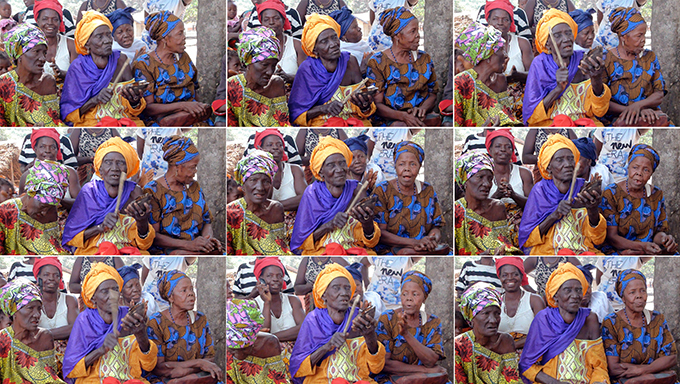
Between 1909 and 1915, Northcote W. Thomas, made hundreds of sound recordings as part of his anthropological surveys in Southern Nigeria and Sierra Leone. His recordings included stories, ‘specimens’ of languages, and especially samples of local music traditions. These wax cylinder records are now in the collections of the British Library Sound Archive – one of the [Re:]Entanglements / Museum Affordances project partners. The fragile wax cylinders have recently been digitized and we are working with the recordings in our fieldwork.
During our fieldwork in Sierra Leone we have been retracing Northcote Thomas’s 1914-15 itineraries and returning copies of Thomas’s photographs and sound recordings to local communities. We have been collecting lots of new information about these archival materials. Supported by a small grant from the British Library, we have also been making some new field recordings of music in the same locations that Thomas worked in. Here, then, is part of our musical journey through northern Sierra Leone, in the footsteps of Northcote Thomas…
Kamalo, Sanda Loko Chiefdom, Karene District
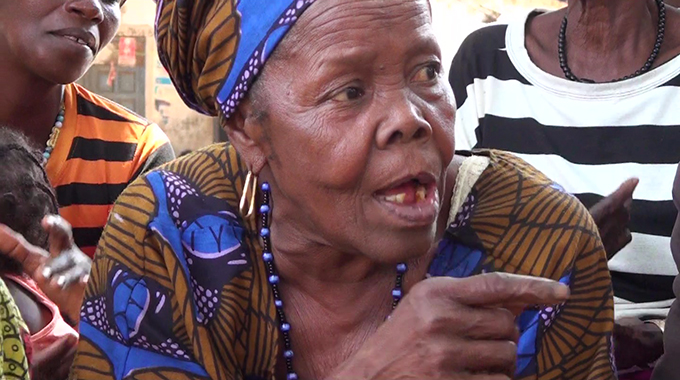
Nandawa Kargbo, from Makankoi near Kamalo, singing a traditional Makama style Temne song accompanied by a ‘5 gallon’ (a five-gallon plastic container, replacing a bass drum). Nandawa sings Eye ye minɛ soli-o [I am worried], A tey mi thonɔŋ-o ka ȧŋwula [I am left in the wilderness], Eye ye I bayɛ sɔ wuni ŋȧsu abɛra I bayɛ su wuni ta mɔnɛ [I have no one left on my side, my fellow women, for the sake of poverty].
Sendugu, Sanda Tendaren Chiefdom, Karene District
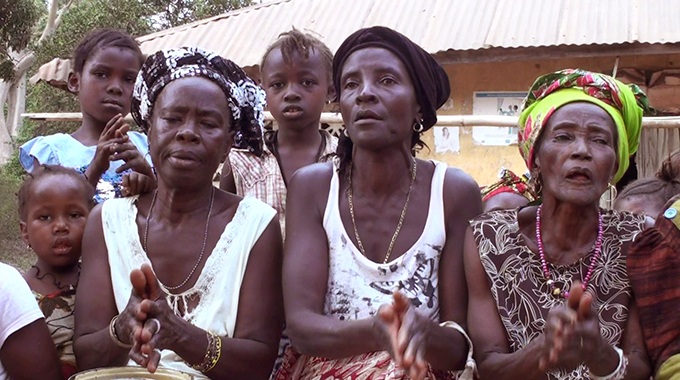
When we arrived unannounced in Sendugu one afternoon, we were greeted by a group of women singing and led by the oldest member of the community (the woman pictured above on the right). At the time of Northcote Thomas’s visit in 1914, Sendugu was the seat of the Paramount Chief, Bai Lama Munu. Since those days, however, the chieftaincy has been elsewhere. The song told of the return of power to Sendugu and the Munu lineage. The song included here has the words: A yɔ mi kare, ye [They wronged me], A yɔ kare ro rȧsu a yɔ mi kare [They wronged me by our people], Ye kare ŋa yemu, kare ka rȧbȧy-o [It is wronged, wronged by our leaders].
Matotoka, Tane Chiefdom, Tonkolili District
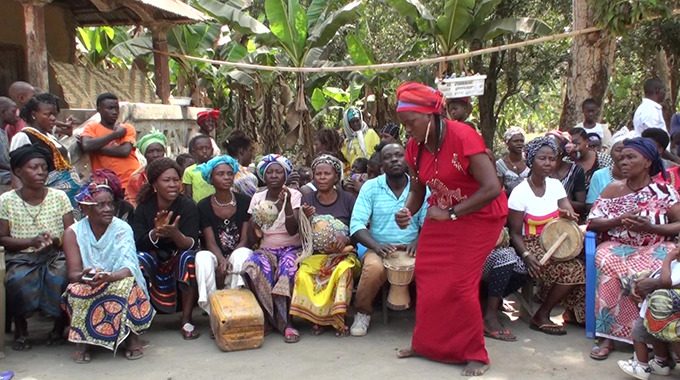
A Bundu society song performed by Digba Nasoko H. Turay, Matotoka. Accompanied by Bundu society women, saka (gourd shaker), saŋbori (Bundu drum), saŋgba (hour-glass-shaped drum) and ‘5 gallon’. The song is a warning to non-members to not interfere with Bundu society business. Digba Nasoko sings Yirȧ gbo əŋ kəli-o, Eya ye gbeleŋ bȧki yirȧ kəli-o [Sit and watch! Our elder sit and watch!], while the refrain, Gbenleŋ say, gbeleŋ kənəmla gbeleŋ say, is a Bundu chant that cannot be translated into ordinary language. The original location of Matotoka that Northcote Thomas would have visited is now the society bush and it is forbidden for non-members to visit it.
Mabonto, Simiria Chiefdom, Tonkolili District
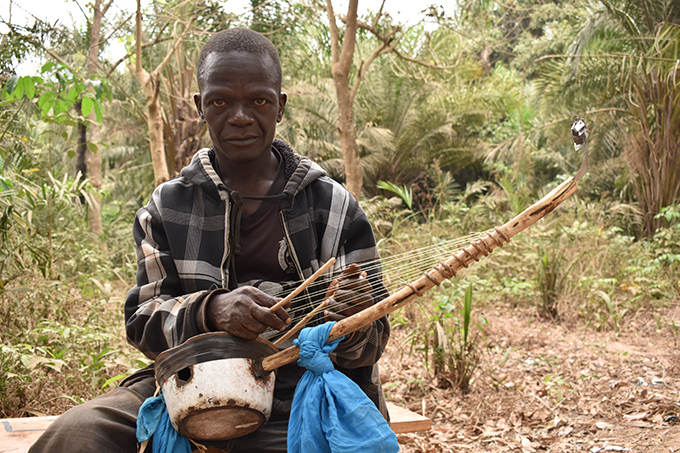
This beautiful song is sung by Tambah Koroma from Kolifaka, and recorded in Mabonto. Tambah accompanies himself on the kondene, a 10-stringed bow (somewhat like a kora). This is originally a Yalunka instrument played by hunters. Traditionally, the kondene‘s bow was inserted into skin-covered gourd, which acts as a sound box. These days a metal pan is often substituted for the gourd. Tambah is a well-known kondene player locally, though when we visited him in Kolifaka, he explained that he hadn’t played in a long time and he showed us his kondene in pieces with no strings. The following day, however, when Tambah met us in Mabonto he had completely restored the kondene. This is a Koranko song his grandfather taught him. It tells of the hunters’ prowess and their ability to attract women, since they could provide food. It was played to hunters to give them courage as they left for the forest and its many dangers.
Bendugu, Sambaya Chiefdom, Tonkolili District
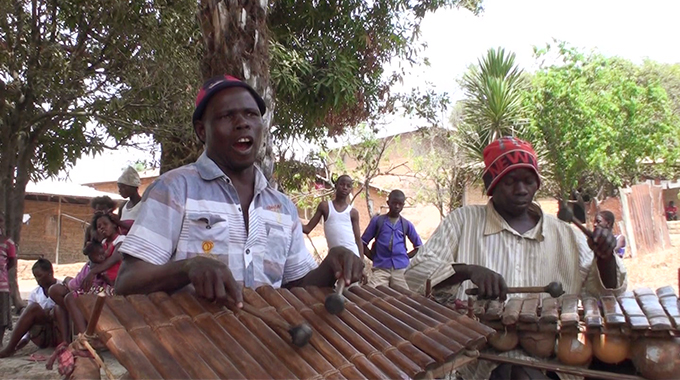
Northcote Thomas did not visit Bendugu, but he photographed a number of balaŋ players in Mabonto – praise singers of Paramount Chief Ali Suri. When we asked about local balaŋ players, we were told about Mohammed Gibateh in Bendugu, some hours drive away on very rough roads. The balaŋ is a xylophone, traditionally associated with the Mandingo, Soso, Koranko and Yalunka areas of Sierra Leone. This recording includes two balaŋ one played by Mohammed Gibateh, the other by his brother Fassaleh Gibateh. They come from a famous family of Koranko praise singers (Yelibah). This song speaks of the value of life – even if one has nothing, if there is life, there is hope. If there is hope, there is life.
Bumban, Biriwa Limba Chiefdom, Bombali District
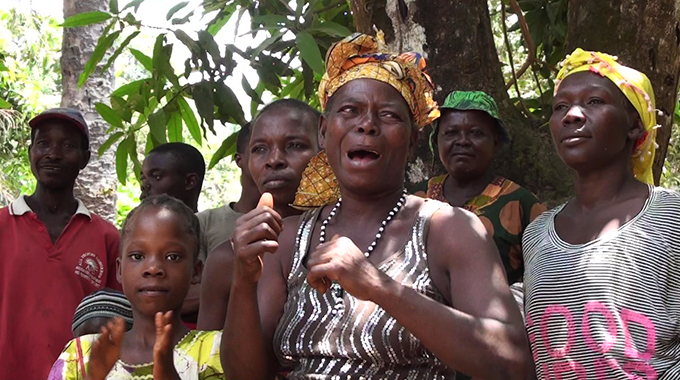
A song led by Ma Binty Conteh welcoming us to Bumban. The song, sung in Biriwa Limba, expresses how the community is happy – someone has come to bring development to Bumban.
Gbawuria, Kabala, Wara Wara Yagala Chiefdom, Koinadugu District
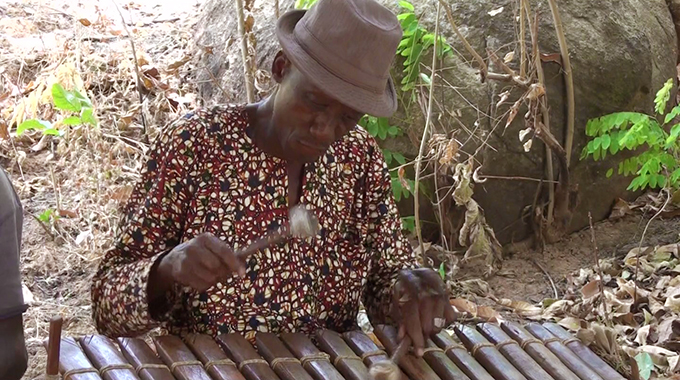
Mohammed Kuyateh is known as ‘Medo’ (‘the famous’), and is a well-known balaŋ player and praise singer in Kabala in north-east Sierra Leone. He is praise singer to the current Paramount Chief, Chief Gbawuru III, and his forefathers were praise singers to Chief Gbawuru I, who Northcote Thomas photographed in Kabala 1914. Thomas also photographed two balaŋ players in Kabala, including one called Fode, likely to be Mohammed’s grandfather, who was indeed named Yelli Fode. The first thing Mohammed did when we showed him this picture was count the number of ‘keys’ or gbene on the instruments – there were 15, while these days it is more typical to have more (Mohammed’s balaŋ has 18). Mohammed explained that the Yellibah always performs his songs in the Maninka language, regardless of what language he speaks normally. He is accompanied here by Salu Conteh on the bata (hour-glass shaped drum), and by his sons, Lansana Kuyateh (second bata) and Alusine Kuyateh (dundun or bass drum). Mohammed himself plays the balaŋ with a hand rattle or bell on one wrist.
Yagala, Wara Wara Yagala Chiefdom, Koinadugu District
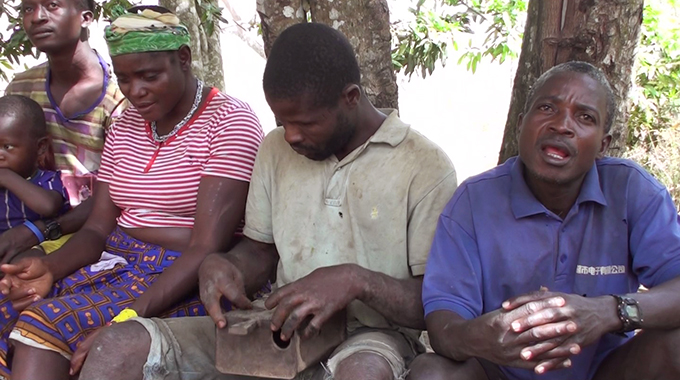
There are many different languages and dialects spoken in Sierra Leone, and Northcote Thomas was among the first to systematically document these. In Kabala and near-by Yagala we struggled to find anyone who could understand a number of recordings made by Northcote Thomas in Kabala in 1914. We were told, however, about a blind singer named Sidi Conteh who lived in a remote farming hamlet who might be able to help us. Guided by a friend from Yagala we set off for Kamaloko and, sure enough, Sidi was able to sing along to the 105-year-old recordings – they were actually in the local Wara Wara Limba dialect! Sidi accompanies himself on the kututen, a kind of finger piano. Sidi’s kututen is made from an old tin gallon can, one side of which is replaced by a wooden finger board to which are attached metal tongues made from old umbrella stretchers beaten flat. The can is filled with pebbles and shaken at the same time as being played to provide the rhythm. We love the way this song builds and how the voices of Sidi and other members of the Conteh family – Thunkeh, Marie and Koda – interweave with one another
Musaia, Dembelia Musaia Chiefdom, Falaba District
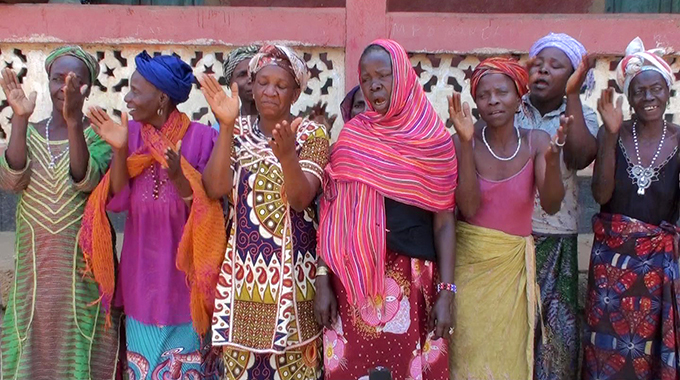
A Yalunka Bundu society song led by Sukaria Sigisa Samura. The women explained that this was one of their oldest songs, dating to the times of the great Yalunka chiefs. It was sung also as a demonstration of their pride in the women’s society, and in gratitude for our visit with photographs and recordings of their ancestors.
Copies of these and other songs recorded ‘in the footsteps of Northcote Thomas’ will be deposited with the British Library Sound Archive. We are grateful for the British Library for supporting this aspect of our fieldwork.
Great fascinating work. I wasn’t able to hear the recordings probably due to my current location but I’m intrigued nevertheless.